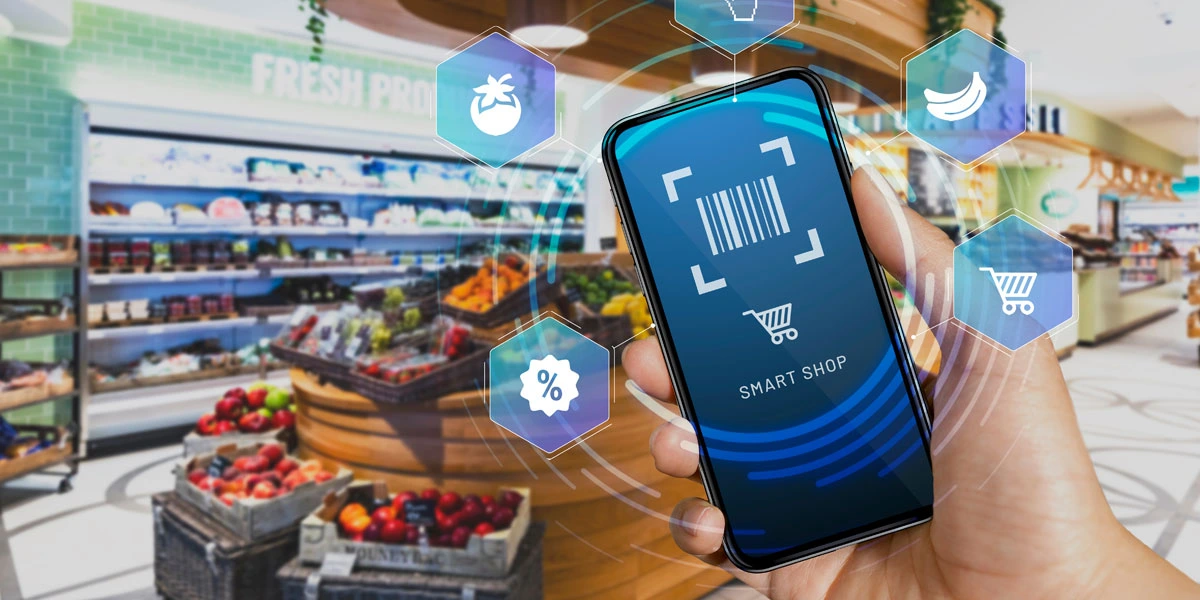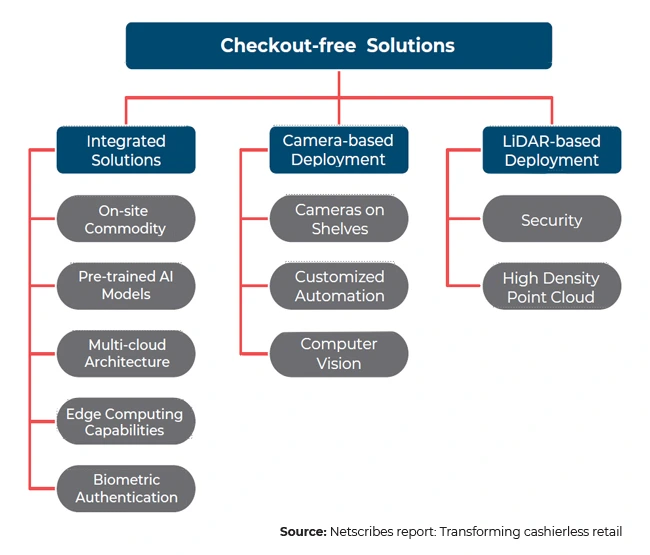How cashierless checkout is transforming retail stores

The pandemic changed how retail looks at tech. The physical shop floor is no longer the main playground. Things have gone digital and probably for good.
Here’s where digital-driven automation has emerged as a fundamental pivot in harnessing the benefits of enhanced customer experience, digitized warehousing, logistics, and guided assortment strategies. Today, even as normalcy is being restored around us, seamless in-store has become a deal-breaker for business success, compelling retailers to refocus on and review the different touchpoints in a shopper’s journey.
Automated or cashierless checkout systems are a key enabler in this regard. With 79% of customers expressing their preference for checkout-less shopping, it’s not surprising to see why 59% of US shoppers see Amazon Go as a threat to Walmart and Kroger.
For savvy store retailers eager to know what’s driving the current retail-tech landscape in cashierless checkout and how they can deftly capitalize on this emerging trend, we dive into all they need to know.
What’s in it for you
From the customer’s standpoint, this trend –
1. Saves shopper’s time and money waiting in long queues
2. Gives them real-time information on cost-saving/discounts
3. Elevates the overall shopping experience through reinvented and more involved billings
From a retailer’s perspective, this transition enables –
1. Collection of live data on the shopper’s in-store journey
2. Real-time inventory tracking
3. Targeted marketing
4. Opportunities for integrating online-offline channels into a combined offering platform
Tech-driven retailers and strategy-based brick and mortars already seeing themselves investing in this technology will find the below trends interesting –
Checkout-free solutions enabling a walkout experience
The ability to ensure a frictionless shopping experience for customers by automating the entire checkout process, while simultaneously empowering the retailers with real-time insights on the customer journey and product demand – is what makes this trend unique.
While eliminating the delay from long queues at the conventional, cashier-based checkout counters, the only thing that’s a plausible drawback is the possibility of customers unintentionally or deliberately forgetting to scan some of the products they acquired. This issue however is being intelligently addressed by key technologies as mentioned below.
This is how retailers are effectively combating revenue losses caused by such shrinkages. Not just this, retailers are also embracing automation strategies to reduce efforts on repetitive in-store tasks, as well as to garner actionable information about their customer shopping patterns and preferences.
Amazon, for instance, a pioneer in checkout-free technologies is fundamentally based on the same technologies used in self-driving cars, including computer vision, sensor fusion, and deep learning. The solution leverages overhead cameras and sensors deployed on shelves to enable a shelf-level checkout option for the stores.
Self-checkout technologies to enhance in-store experiences
Needless to say, the pandemic breathed new life into self-checkout technologies, as contactless payments became critical. Citing safety and cleanliness, 79% of people worldwide and 91% in Asia Pacific say they are now using tap-and-go payments.
Mobile scan and go shopping is easy to deploy and cost little in term of retail infrastructure. Similarly, our research reveals that smart shopping carts that include cameras, sensors, GPS chips, alarms, and weight scale mechanisms are another emerging retail trend.
The best part about such carts is that unlike the Amazon Go experience these intelligent shopping carts can co-exist without retailers having to reconfigure or re-orient much on their store floors.
Robotnik and Follow Inspiration are two companies innovating in this space and have introduced autonomous self-driven shopping carts for retailers. As for mobile scan and go deployments retailers like Tesco, Kroger, and Asda made this option available across 581 stores.
Read more: How health and safety technologies have changed retail
The road ahead
For retailers and large store brick-and-mortars looking to truly capitalize on these innovations, winnowing in every wind wouldn’t be wise. We’d advise a few strategic ways to effectively prioritize your technology investments in this space:
- If your primary goal is to reduce overcrowding at checkout points, a hybrid approach of integrating Mobile Scan and Go solutions, along with the existing cashier-based infrastructure will make better sense.
- If your objective is to gather insights from customer data, solutions like Mobile scan and go, RFID, or a smart cart-based option – inherently any checkout-free solution would provide maximum customer shopping insights.
- If you’re aiming to sync your front-end with your back-end for better transparency into inventory and logistics, RFID-based solutions offer a combination of tracking the product journey.
In a nutshell, machine learning, deep learning, image recognition, edge, and cloud computing are driving the technical development of checkout-free and cashierless checkout i.e. self-checkout solutions. While checkout-free solutions are setting the pace for a futuristic retail store, the traditional self-checkout options are now being remodeled with the integration of advanced hardware and software solutions.
There’s more from where this came. Download our research-backed report – Transforming Cashierless Retail to get a deep dive into what’s clicking with the post-pandemic consumer and how are retailers rising to fulfill such expectations with evolving technologies.
For more than 15 years, leading e-commerce, CPG, and retail companies have been partnering with us to achieve strategic objectives through our suite of digital commerce solutions. To know how we can help you make informed technology choices in cashierless checkout systems and more, fueled by relevant market and competitive insights contact us.








